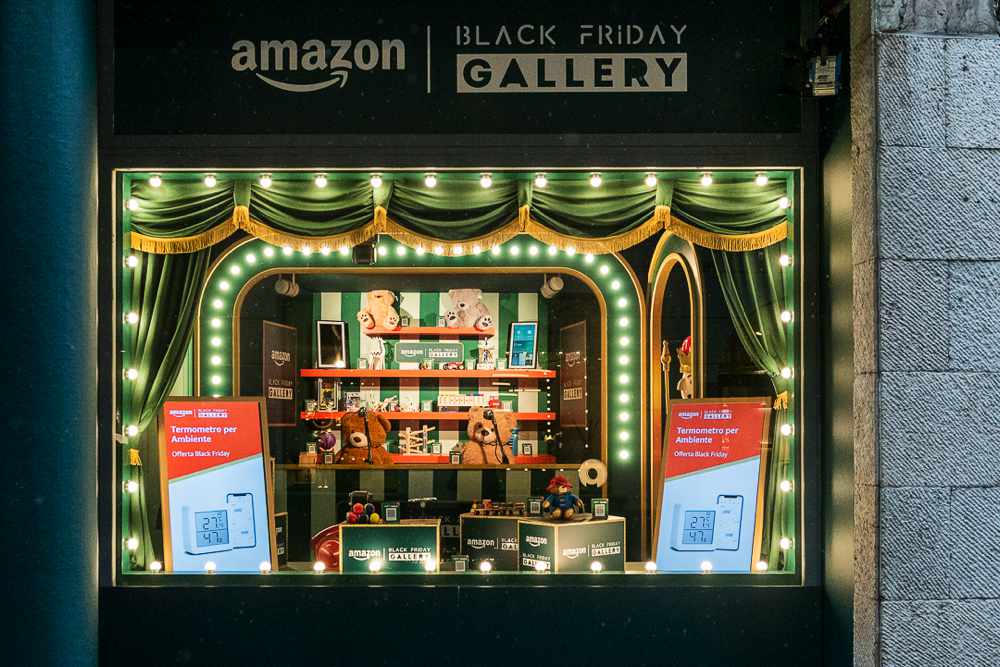MILAN – The November 22nd 2022 has opened the doors, at the Remittance of Flowers in Milanin the heart of Brera, Amazon Black Friday Gallery, a pop-up space which, in addition to accompany customers with suggestions for the Black Friday and the Christmas 2022, offers an unprecedented and evocative immersive space: there Artist’s roomwhich sees the protagonist the sculptor Iago with the workRelic”, a generating hand, a perfect metaphor for a history of manual skills and ancient traditions.
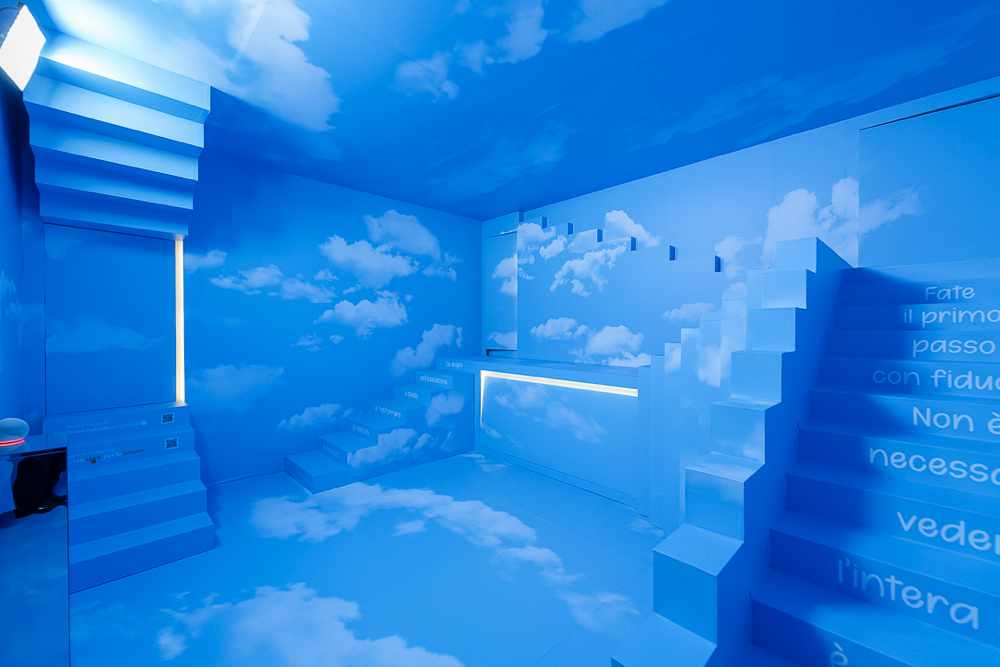
Born in Frosinone in the 1987, Jago uses marble as a privileged medium, looking to the tradition of the great masters of the past, but at the same time undertaking a completely personal path, always attentive to current and contemporary themes. Skilled communicator, casual user of social media, in particular InstagramJago tells us in this interview his vision of art, his way of understanding creativity, his special connection with the public and the “non-relationship” with the art system.
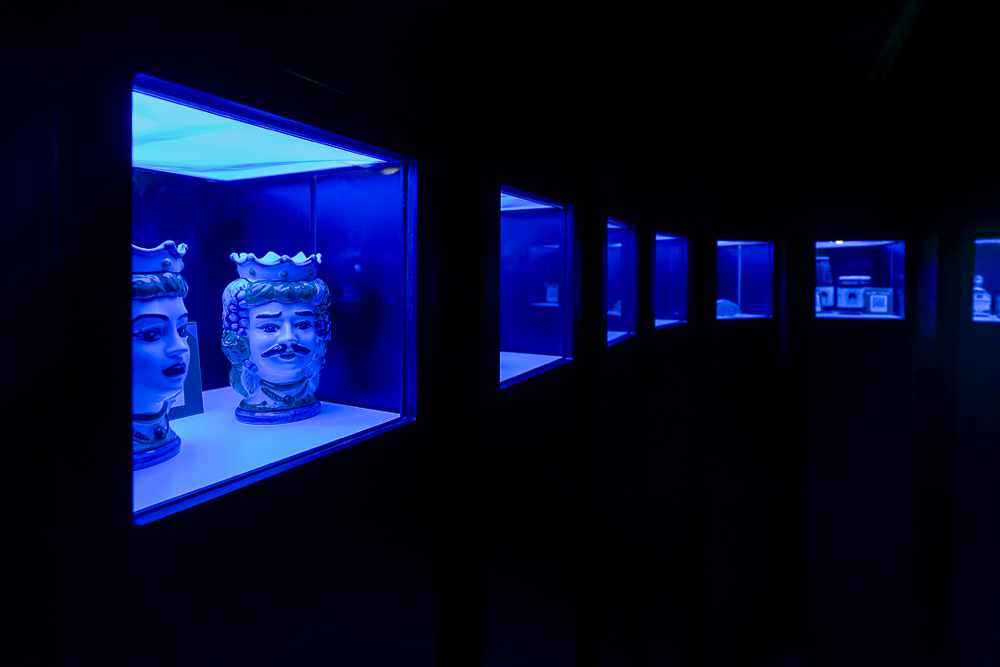
Let’s start from this experience with Amazon. How was the project born and what does it mean for you to take part in this initiative?
This initiative means a lot to me: taking part in it is a wonderful opportunity to underline the importance of Made In Italy, which I believe represents me, even though it recognizes that there are incredible excellences in Italy before which one can only bow down, and before which I bow myself.
The work exhibited here, Reliquia, represents something symbolic: a relic, a hand, or the tool that allows us to adhere to reality, which children use to understand the world. Going back to the root can mean taking one step back to take two steps forward. I won’t dwell too much on the meanings of the work: I believe that the beauty is to feed on the meanings of others, those that others want to find in us.
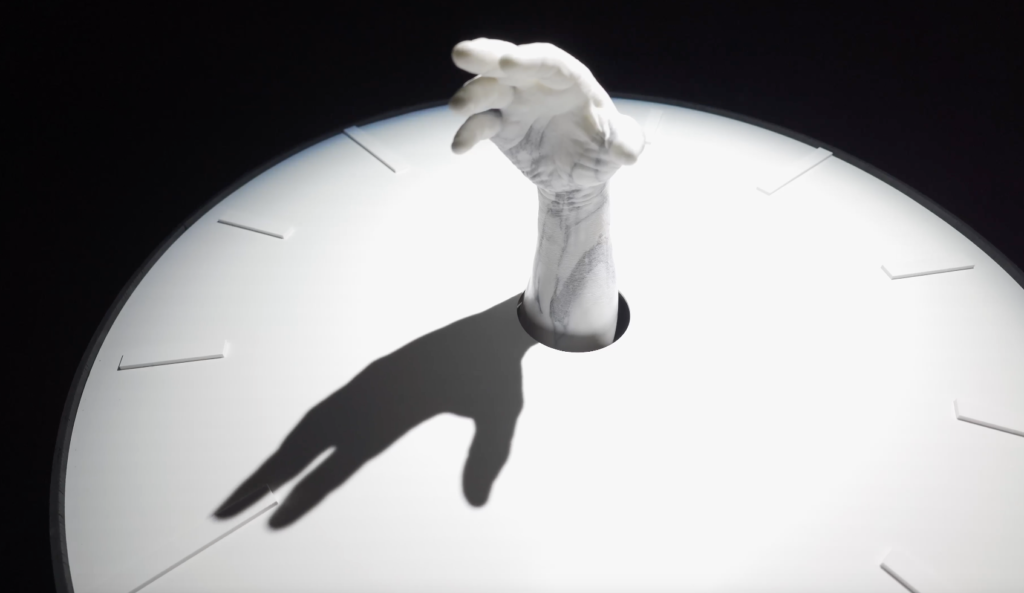
What is the reason why the work “Reliquia” was chosen to be exhibited in this context and how was the installation conceived?
We chose this work because it is a very simple symbol: in dexterity there is the possibility and the ability for everyone to create shared values. As for the set-up, the pretext of the sundial and therefore of moving light, wants to remind us that we are deeply connected not only with the time we live in, but also with values inherited from another time, from which we are invited to start today to write new messages to leave to the generations to come.
Communication has a very important value for you. You are to all intents and purposes an artist who is also very social with a considerable following. How important is it for you to share and relate to others for the purposes of your work and why this continuous need to tell the story “behind the scenes”?
The behind the scenes of the creation has always been the most interesting part for me. Today we have the possibility to involve people in the creative process. When I was a child I was very attracted by the dream of realisation: I was fascinated by what I could not see, which was not told. Today, however, it is possible for us to reach the whole world with a smartphone, and the message it conveys is strong: creating a great work is possible, it can be done! A boy of today can be inspired by the excellence of the past to become himself. For me, social networks are a “stage”, which shows the “intimate” side of creation, with its beauty and its problems. In this sense, the works that I create I feel as “participatory” works.
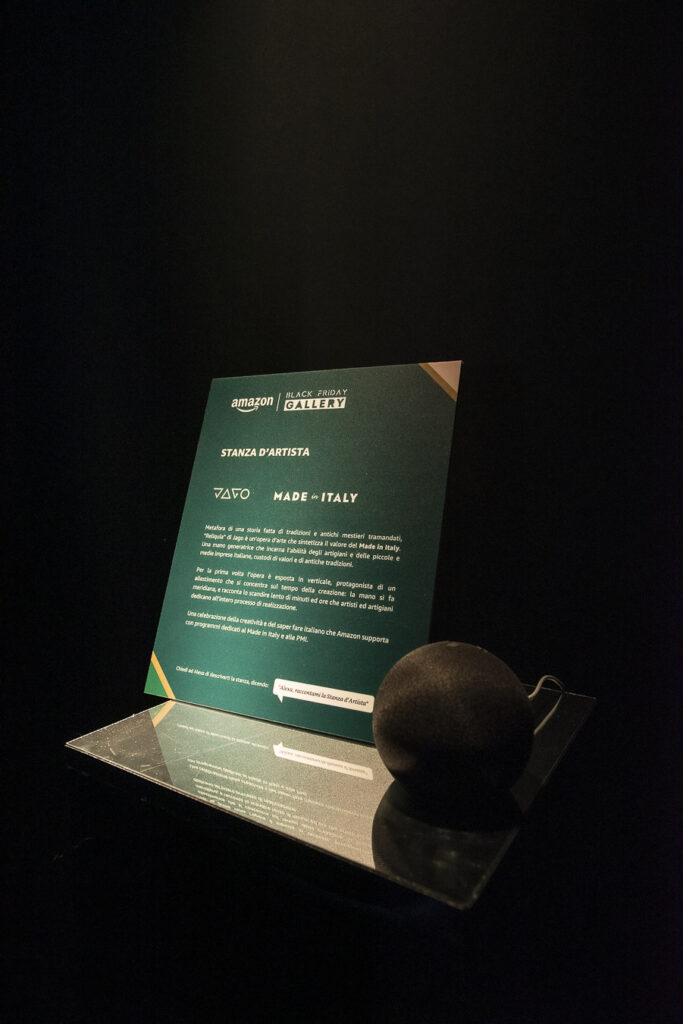
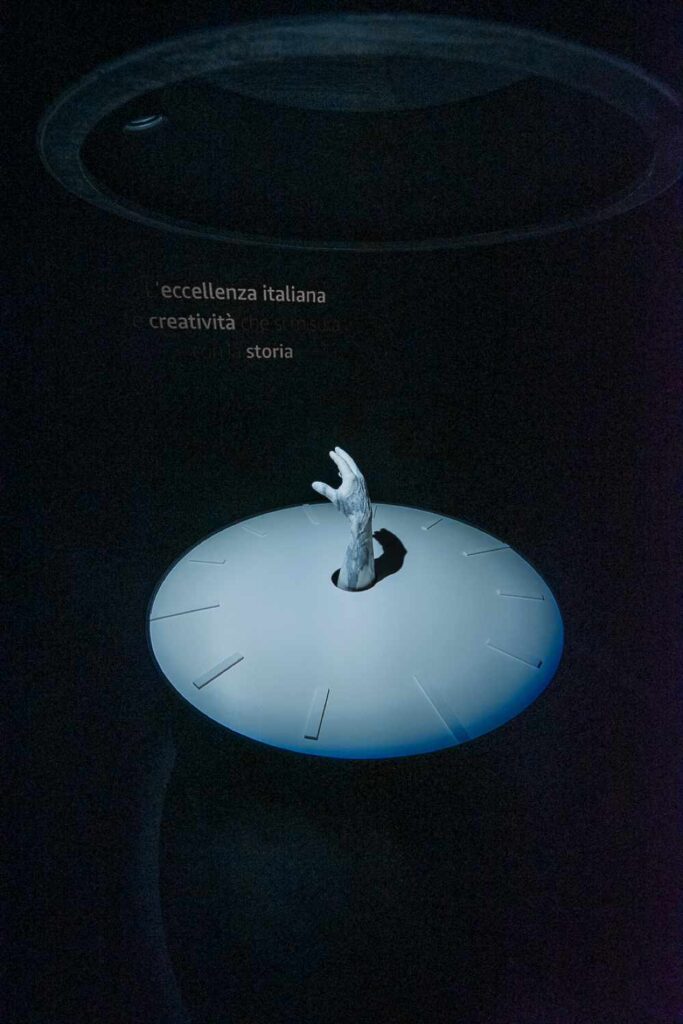
What is your relationship with the “art system”? Are you not represented by any gallery by choice or because your art, your “know-how” is not in the interest of contemporary art galleries?
I don’t have particular relationships with the traditional art system, because what I do doesn’t necessarily fall within this sphere. It’s a system that works and can be interesting and right for those who are actually close to that language. Personally, I have my system and my market: the means we have available today allow us to take personal paths, investing directly in ourselves.
When I started my studies, the feedback I often received was that I could never work like this. There was only one possibility: to be represented. This implies necessarily having to adapt to the market. In this way, however, freedom is compressed into certain schemes, and my way of working instead implies autonomy.
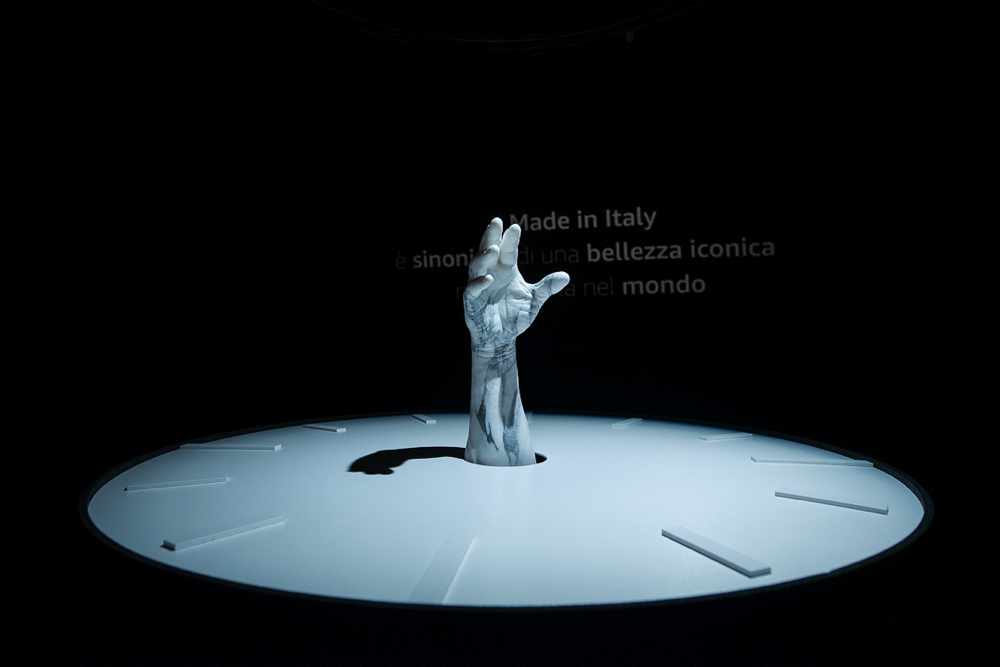
Your site reads “My life is made up of failures, to sculpt something you must first break it”. What do you mean exactly?
This sentence is an analysis of the reality of my life and of what I keep wishing I could meet along my path. I firmly believe this: whoever makes new things will always fall. My life is made up of failures because I continually do new things, and in doing so I continually fall, always trying to find the energy within me to get back up.
If you want to build you have to leave something behind. To do a good thing you have to fail a thousand times: this is the reality that concerns me and those like me who continuously do new things. To do this, you need to be able to leave behind the emotions related to failure, even the negative ones. We already have the tools to do great things within us: I wish me and everyone else to always believe in them.
You use familiar images in your works that are often linked to current events. Considering the meticulousness, the technique, the precision with which you create your works, do you give more importance to the aesthetic factor, the image or the message to be transmitted?
The aesthetic and the message always coincide, but while the aesthetic is immediately shareable because it is the first thing that reaches the eye, the message is not so immediate. The message is always personal, like the words. If, for example, I say the word “dog”, I have my personal memory and my feeling linked to that image; for someone else it will be different. I think it is a great value to leave the other person the possibility of putting their own meaning inside those forms. If art is a language, it already says something in itself without the need for too many explanations: I let other people participate in my creative journey by giving me different points of view, the ones I don’t have.
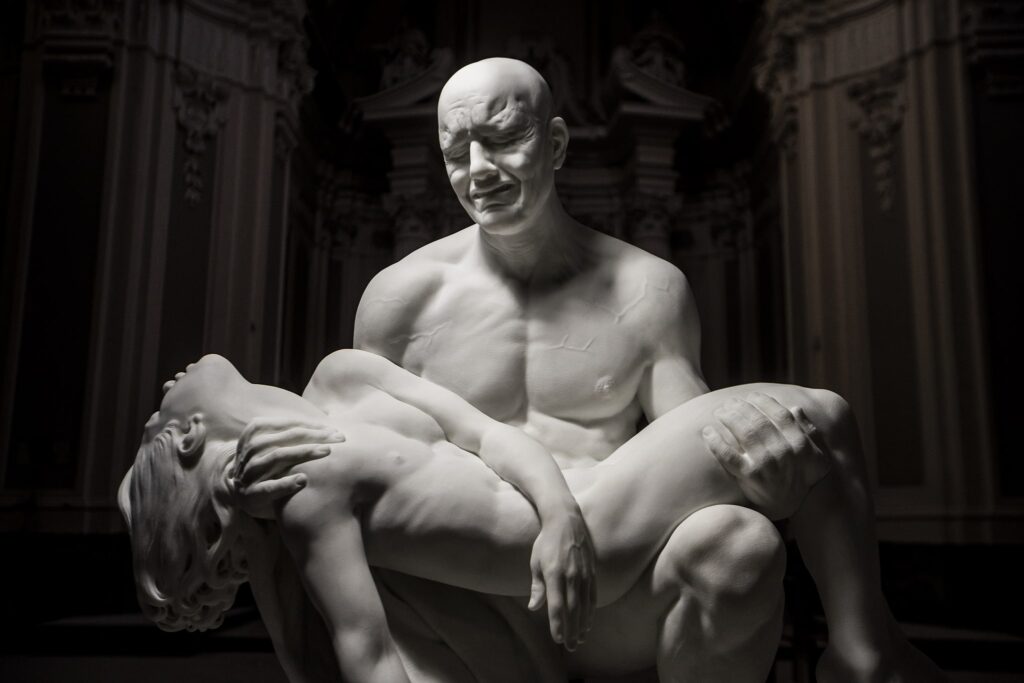
Is there a form of spirituality in your works?
There is certainly a spiritual need to guide me, which I don’t share openly because it is more than intimate. I live it in a very personal way in my daily life. Someone can certainly recognize a spiritual content in what I do. In Naples, for example, while I was working on the Pietà, a lady came in and began to pray. I could have explained to her that this was not a religious work, but by doing so I would have lost the opportunity to enrich myself with her point of view, giving up a new meaning. If there is a spirituality in my works it is what others put into it. Surely I also put mine in it, but that’s mainly about me.
You managed to combine a traditional language like sculpture with the contemporary. How do you feel about technology, digital art, crypto art, NFTs? Is it something that may be in your future interests?
I use technology a lot and use it every day: I live today and use all the means available. However, I don’t think it’s necessary to ride the novelty at all costs. For example, if today you talk about NFT it is synonymous with sales, and therefore the value and the contents seem to come later. I believe that sometimes you can study, wait before experimenting. But everything is always a stimulus: personally I like everything, I’m attracted to everything. Maybe at the right time I’ll do my operation, but for the moment I’m here observing and studying.
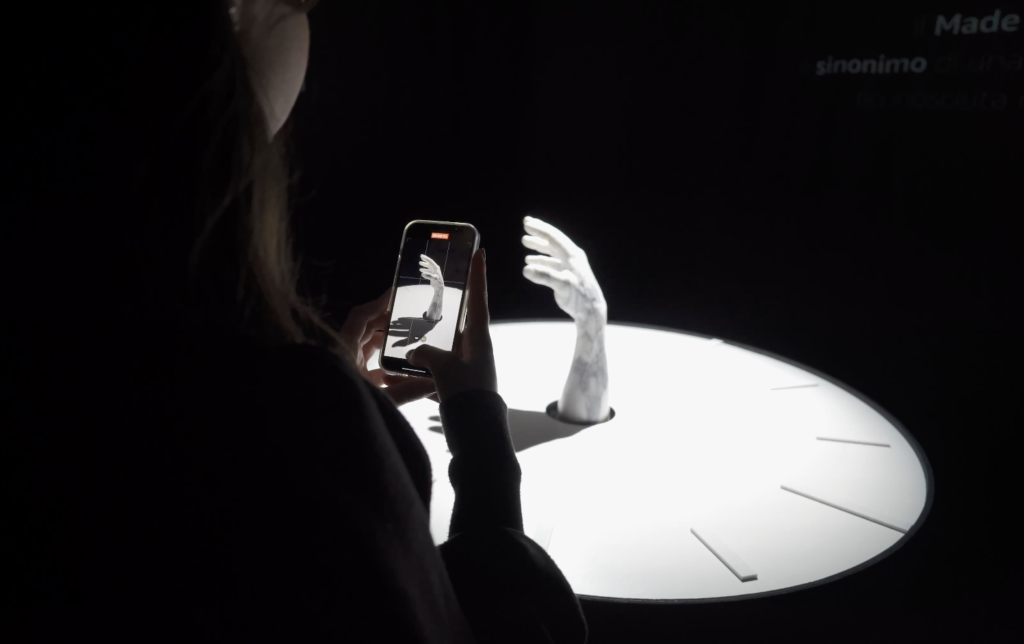
You have been a visiting professor at the New York Academy of Art. What do you try to convey and communicate when you teach?
For me, teaching was an absolutely positive experience: I accepted it because it’s a time to put yourself to the test, have a different experience and learn, changing your point of view.
Personally, I didn’t really like being a student, despite the fact that I grew up in close contact with the values of teaching in my family. Interesting things happened outside, my teachers often “imagined” them. However, becoming a teacher forces you to ask yourself questions: what do I want to leave on the other side, for the other? A good teacher in my opinion must be a good listener, a good communicator. A young person needs points of reference, and the teacher’s role is absolutely fundamental: in front of you you have human material that is more manipulable than clay, and the responsibility is great. I strongly believe in the teaching profession and I think it deserves more attention and recognition.
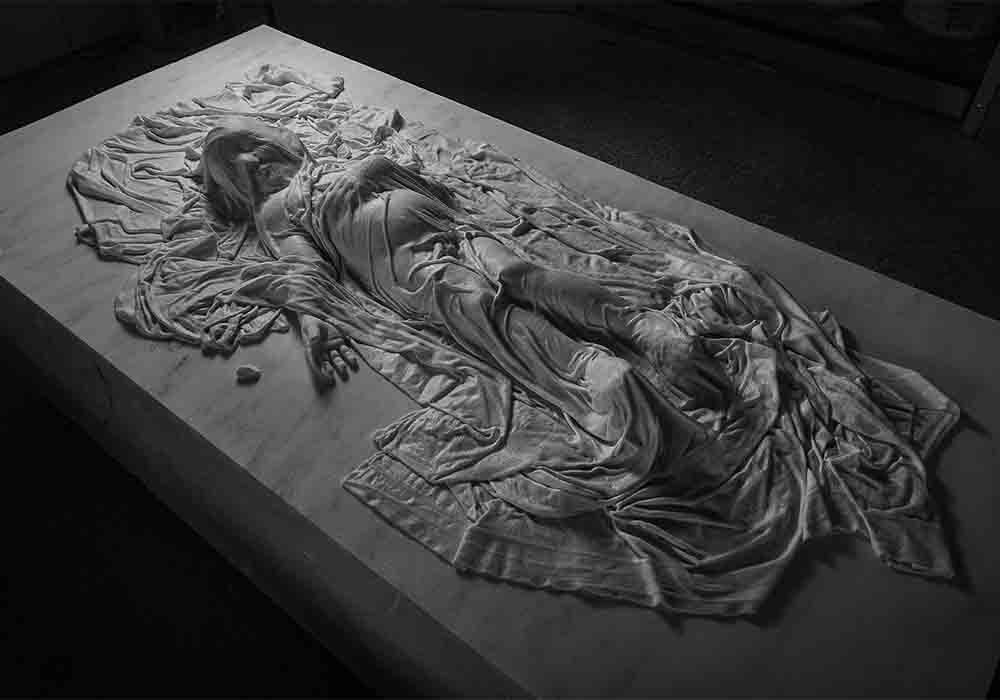
What words would you use to define yourself?
One word I use to define myself is entrepreneur. The word “artist” is too vague, I think today’s creative is more of an entrepreneur!
Can you anticipate any future projects?
There are many future projects. Today I am completely absorbed by the fundamental need to understand as soon as possible where I will make my David. Making a sculpture is simple, but creating the conditions to make it is very difficult. Then there are the commitments relating to our museum offers in Naples, therefore the Veiled Son and Sant’Aspreno. And then a whole bunch more that I can’t share today, but look forward to sharing with you soon.
Jago stars in Amazon’s Artist Room. The interview – Arte Magazine

